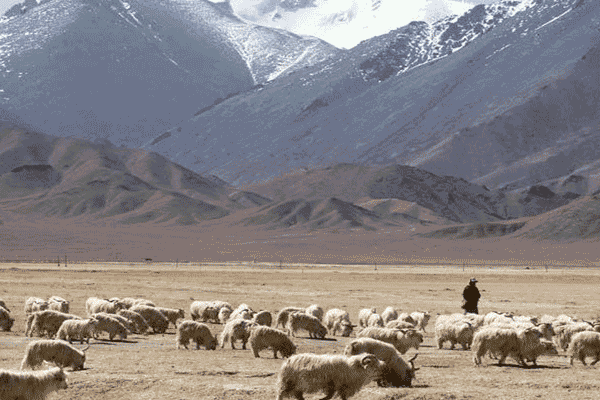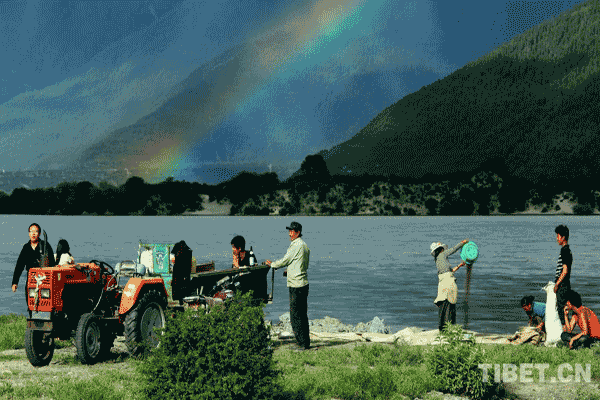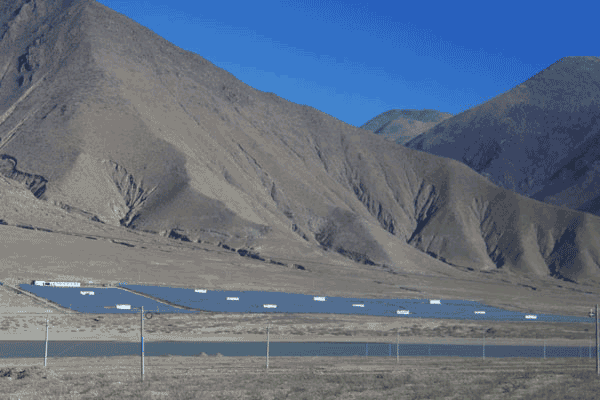2013-01-06 15:15:00
|
by: Lucy Qin
|
From: China Tibet Online
In a crucial year of transition in the 12th Five-year Plan period (2011-2015), 2012 is a favorable time for the Tibetan Autonomous Region (TAR) when it has accepted many preferential policies from the government. The whole region has maintained a stable development and a harmonious society for local people as before.
Tibet's economic vitality has consistently improved
The primary industry, especially the agriculture and husbandry made remarkable achievements in 2012 with the realization of the set target of grain, edible oil, vegetable, meat and dairy.
Until the end of 2012, the grain output reached 0.95 million tons, including 0.63 million tons of highland barley. The volume of rape and vegetable production amounted to 70,000 tons and 0.73 million tons respectively.
The amount of newborn livestock in the whole region attained 7.263 million with 90 percent survival rate. The meat production is 0.3 million tons, increased by 8.4 percent compared to year-on-year. The dairy production is 0.35 million tons with an increase of 11.6%.

Tibetan cashmere goats on the Qinghai-Tibet Plateau. [Photo/Xinhua]
At the same time, a system of secondary industry with distinctive Tibetan features was gradually improved.
According to the status from the Minister of Industry and Information Technology of TAR, Tibet had gained an industrial added value of 2064 million yuan (about $331.27 million) during the first half year of 2012 with an increase of 12.7 percent. The increment speed of industry was 1.4 percent over the whole region's GDP, 0.7 percent higher than that of China's Western Region Industry and 2.2% higher than that of the whole country.
In addition, the tourist industry highlighted the Tibetan economy this year.
By November 30th, 2012, the number of tourists hit more than 10 million for the first time, which signifies Tibetan tourism will step into a phase of quality service, higher efficiency and sustainable development based on the related analysis.
Opportunities are provided for more and more farmers and herdsmen to live on the Tibetan tourist industry.
According to the Tibetan Travel Bureau, the general revenue of tourism in the first half year of 2012 had already reached 2.4 billion yuan (about $385.2 million), increased by 30 percent compared to the same period.

The awarded couple, Dong Liguo and Liao Luping, is above 60 years old. The wife is taking photo of her husband on the viewing deck of Chokpori in Lhasa on December 23, 2012. [Photo/Xinhua]
Major projects go smoothly in Tibet
A total of 226 major projects funded by the government have been speeded up in 2012.
The historical investment of capital construction was 28 billion yuan ( $4.49 billion) by the end of September, 2012, up by 20 percent over that of 2011, covering 93 percent of total annual national investment of 30 billion ( $4.82 billion).

National road 307 in Tibet Autonomous Region [Photo/China.com.cn]
All the money has been distributed in almost every aspect of social undertaking, such as 6.5 billion yuan ($1.04 billion) to projects of agriculture, husbandry, forest and water conservancy, 10.75 billion yuan ($1.73 billion) to transportation, 2.42 billion yuan ($388.4 million) to social programs, 2.48 billion yuan ($398 million) to city infrastructure, 1.13 billion yuan($181.4 million) to government construction, 0.24 billion yuan ($38.52 million) to projects of economy and trade,0.12 billion yuan ($19.26 million) to industrial projects and 1.12 billion yuan ($179.8 million) to other projects.

Local people are working by the Nyang River. [Photo/China Tibet Online]
More preferential policies related to people's livelihood are put into practice
During the year of 2012, more preferential policies are put forward to improve the living conditions of local people, including housing, education and medical treatment, etc.
The 62-kilometer-long heating supply pilot project in Lhasa, Tibet was started from April, 2012, with an investment of 14 billion yuan ($2.25 billion). By the end of 2012, almost 40 percent Lhasa families have installed the heating supply system. It is predicted that the whole Lhasa will be covered by the end of 2013.
From 2009 to 2012, with a total investment of 18 million yuan ($2.89 million), seven community health service centers have been built in Lhasa, and two have been built in Shigatse. Taking Tibetan medical physical therapy for example, every therapy only cost each patient 20 yuan ($3.21).
According to the official report, by December, 2012, altogether 14,723 families including 70,000 poor local farmers and herdsmen have moved to the new houses because of the affordable housing project. The planned investment of the whole project is 500 million yuan ($80.25 million).
In addition, subsidized housing provided for every family raised from 12,000 yuan ($1926) in 2011 to 25,000 yuan ($4012.5) in 2012 due to the changing market prices. The families under the poverty line can also get discount loans.

File photo taken on November 8, 2012 shows a large-scale photovoltaic plant in China's Tibet Autonomous Region, which greatly eases power shortage in remote areas. [Photo/China Tibet Online]
According to the Energy Administration Office of Tibet's Development and Reform Commission, by the end of 2012, a total of 123,637 sets of home-based photovoltaic heating system have already installed. It means that about 690,000 local people in 1,630 administrative villages in the whole region including all the natural villages, public places, schools and temples have access to electricity, symbolizing that the problem of electrical insufficiency has basically resolved.
